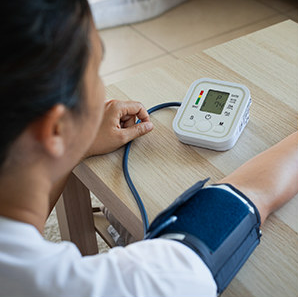7 Lifestyle Changes to Prevent Heart Disease

Your heart is a vital organ that keeps your body functioning. But you may not always treat it that way. The truth is, our day-to-day choices and overall lifestyle can overwork and damage our most precious and hardest working muscle. But you are never too young or too old to begin taking good care of your heart! And you can begin by making these seven critical lifestyle changes.
Be smoke-free
Smoking is the leading cause of preventable death – and not just due to lung damage. Because nicotine causes your blood vessels to tighten and narrow, smoking can burden your heart by making it harder for blood to reach your heart muscle. This is also why smoking temporarily raises blood pressure.
In addition, the carbon monoxide in cigarette smoke decreases the amount of oxygen delivery to your heart. That's why smokers have twice the risk for heart attacks compared with nonsmokers. If you currently smoke, prioritize quitting as your first action against heart disease. Your primary care provider (aka family doctor) can help you explore effective ways to quit, including medicines and nicotine replacements that fight cravings. Don’t forget to avoid secondhand smoke too.
Eat heart-friendly foods

What you eat can have a major impact on the health of your heart and blood vessels. Certain foods help keep your arteries open so your blood can flow freely. Other foods, however, may contribute to the narrowing of your arteries, and over time, increase your risk for a heart attack.
To help your heart stay strong and your arteries clear, be sure to nourish your body by including the following each and every day, as recommended by The American Heart Association (AHA):
- A wide variety of fruits and vegetables
- Whole grains and products made up mostly of whole grains
- Healthy sources of protein (mostly plants such as legumes and nuts; fish and seafood; low-fat or nonfat dairy; and, if you eat meat and poultry, ensuring it is lean and unprocessed)
- Liquid non-tropical vegetable oils
- Minimally processed foods
- Lowered intake of added sugars
- Foods prepared with little or no salt
- Limited or preferably no alcohol intake
Set exercise goals
Exercise gets your heart pumping. This helps your body use oxygen better and makes your heart stronger. Exercise can also decrease your blood pressure and the amount of fat in your blood.
While it might be tempting to start an ambitious exercise program to begin reaping these benefits, do start out slowly – especially if you haven't been active for a while. Begin with short sessions, such as 10-minute walks. Gradually increase the length of your workouts to at least 30 to 40 minutes, 4 to 5 days a week.
Experts recommend getting at least 2.5 hours of moderate physical activity per week for substantial health benefits. Talk with your healthcare provider before starting or changing an exercise program.
Watch your blood pressure

Blood pressure is the force against the walls of your blood vessels as blood flows through them. The harder your heart works, the greater your risk for having a heart attack.
Making smart lifestyle choices such as eating a diet low in sodium, exercising regularly, staying away from tobacco, reducing stress, and limiting alcohol will decrease your risk of high blood pressure. Monitor your blood pressure and aim for less than 120/80 mmHg.
Watch your weight
The American Heart Association (AHA) considers overweight and obesity to be major risk factors for heart disease. If you are overweight, losing weight can decrease your risk.
Reaching or maintaining an ideal weight also helps lower your blood pressure and cholesterol levels. When your weight is in the ideal range, your body works more efficiently. You’re also less likely to develop conditions like diabetes, heart disease, osteoarthritis, certain cancers, and sleep apnea.
Reduce stress
Both high stress and ongoing stress are consistently linked to health problems – including an increased risk for heart disease and heart attacks. The ways you may cope with stress, such as overeating and smoking, can further harm your heart.
Focus on reducing your stress by exercising, sharing your concerns with friends and family, and making some quiet time for yourself each day. Devoting 15 to 20 minutes a day to something you enjoy is a simple, yet effective step toward a less stressful life.
The AHA recommends regular screening for your risk for heart disease starting at age 20. Screening includes measuring blood pressure, body mass index (BMI), waist circumference, and pulse at your annual wellness visit (or at least every 2 years). Getting a cholesterol test every 5 years for normal-risk people is also recommended.
Maintain a healthy cholesterol level

Having high levels of cholesterol in your blood can begin early in life and continue throughout your lifetime. When your blood cholesterol is high, it forms plaque in the walls of your arteries, narrowing the opening for blood flow.
Over time, your heart and brain may not get enough oxygen, which can lead to coronary artery disease, heart attack, or stroke.
Healthy eating, regular exercise, weight management, and quitting smoking are good steps toward keeping your cholesterol down and lowering your risk for heart attack and stroke. Your healthcare provider can also prescribe medicine to help lower bad cholesterol levels.